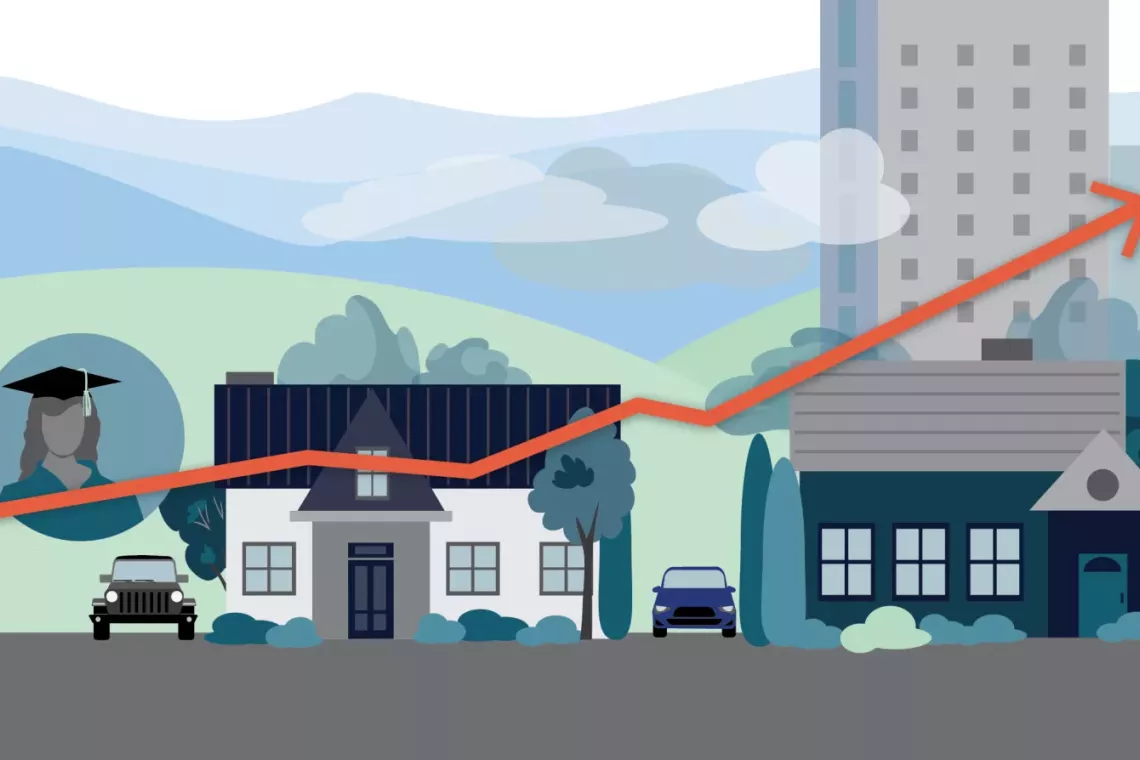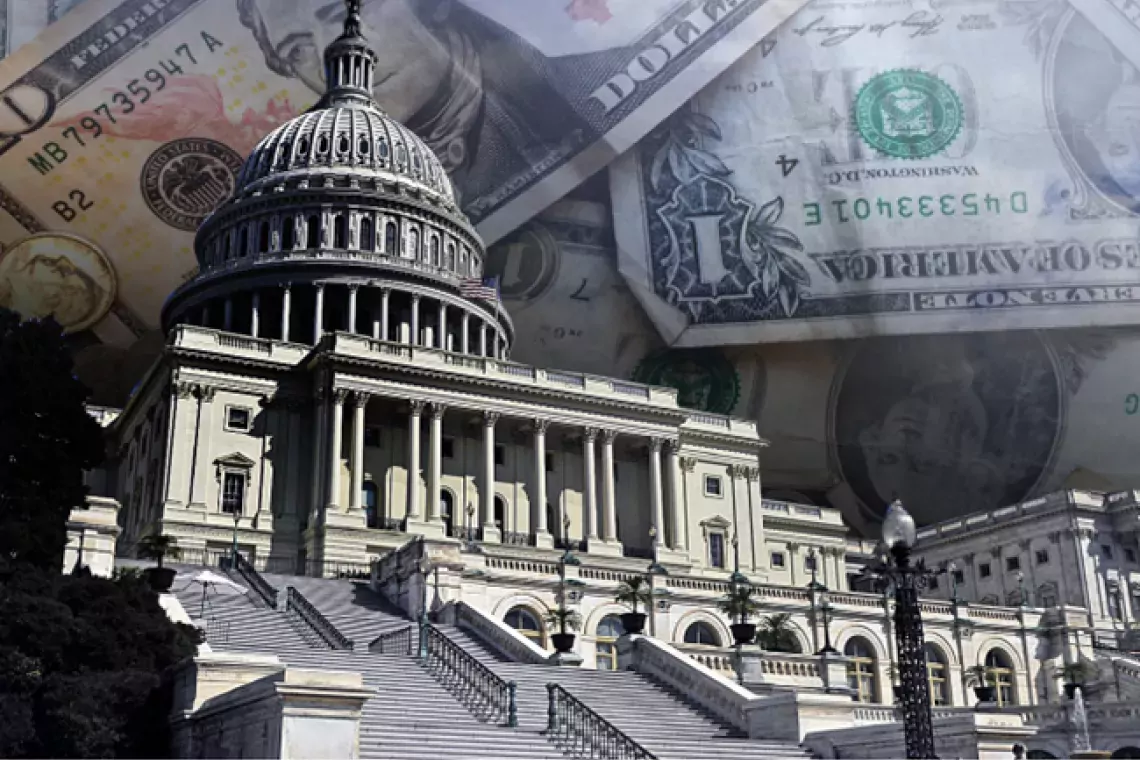The Federal Government Is on an Unsustainable Fiscal Path
Growing debt is not just a number—it represents a threat to our economy and our ability to meet national needs and priorities.
The federal deficit (the amount of money spent vs. the amount collected) increased for the fourth consecutive year. This year—and for the foreseeable future—the annual deficit is expected to top $1 trillion. At the same time, the federal government is highly leveraged by debt, which further strains the nation’s fiscal condition.
In today’s WatchBlog, we take a look at our fourth annual update on the nation’s fiscal health. How did we get here? What steps do we need to take to address historic debt levels?
By the Numbers: A Trillion Dollar World
- Debt held by the public increased to $16.8 trillion in FY 2019 (or 79% of GDP)—up from $15.8 trillion (or 77% of GDP) at the end of FY 2018. This means that the value of debt was equal to 79% of the value of all goods and services produced in the U.S. in FY 2019. Long-term projections show continuing increases with debt held by the public growing faster than the economy. This situation—in which debt grows faster than GDP—means the current federal path is unsustainable. To change course, the nation will have to balance short-term priorities with a forward-looking plan for fiscal sustainability
- To put these numbers in perspective, debt held by the public as a share of GDP peaked at 106% just after World War II (in 1946) and has averaged 46% since. However, if current trends continue, the debt as a share of GDP in 2050 will be nearly twice that level and about 4 times the post-World War II average.
- Social Security spending already exceeds $1 trillion per year; Medicare spending is expected to exceed $1 trillion per year by 2026. By 2032, net interest will exceed $1 trillion per year.
- Over the past 50 years, net interest costs have averaged 2% of GDP, but they are projected to increase to 7.2% of GDP by 2049.
Rising federal debt could constrain Congress’ ability to support the economy or address other national priorities, reduce private investment & overall economic growth, erode confidence in the U.S. dollar. The below chart shows when spending on net interest exceeds that on other areas of spending if no action is taken to change the path.
Early Action Is Important
GAO, the Congressional Budget Office, and the 2019 Financial Report (authored by the Office of Management and Budget and the Department of Treasury) agree that the longer Congress and the president delay action to address our fiscal health, the greater the changes will need to be, placing additional burden on future generations and taxpayers. Our annual report identifies suggestions Congress could consider as part of a plan to put the government back on the path toward sustainable fiscal health.
Our America’s Money Matters video takes a look at the nation’s financial condition and future, and opportunities to improve it.
Another way to learn more, read our report or listen to our podcast with GAO’s Susan Irving, an expert on debt and fiscal issues.
Comments on GAO’s WatchBlog? Contact blog@gao.gov.
GAO Contacts
Related Products

GAO's mission is to provide Congress with fact-based, nonpartisan information that can help improve federal government performance and ensure accountability for the benefit of the American people. GAO launched its WatchBlog in January, 2014, as part of its continuing effort to reach its audiences—Congress and the American people—where they are currently looking for information.
The blog format allows GAO to provide a little more context about its work than it can offer on its other social media platforms. Posts will tie GAO work to current events and the news; show how GAO’s work is affecting agencies or legislation; highlight reports, testimonies, and issue areas where GAO does work; and provide information about GAO itself, among other things.
Please send any feedback on GAO's WatchBlog to blog@gao.gov.




